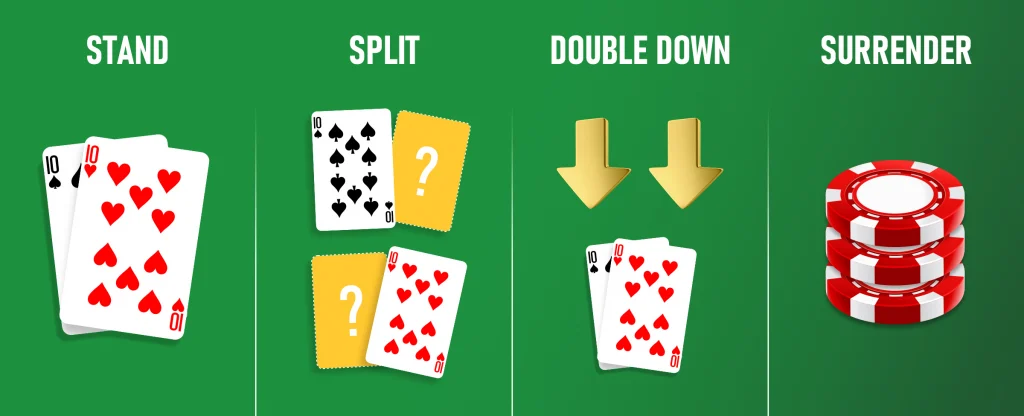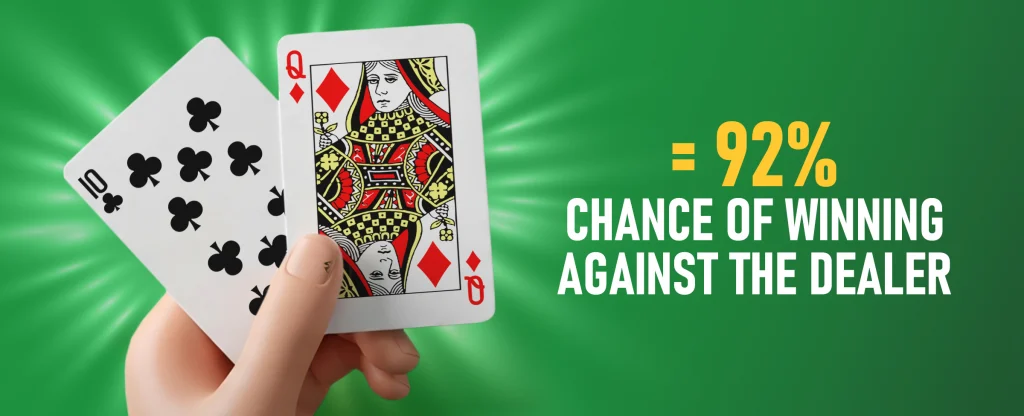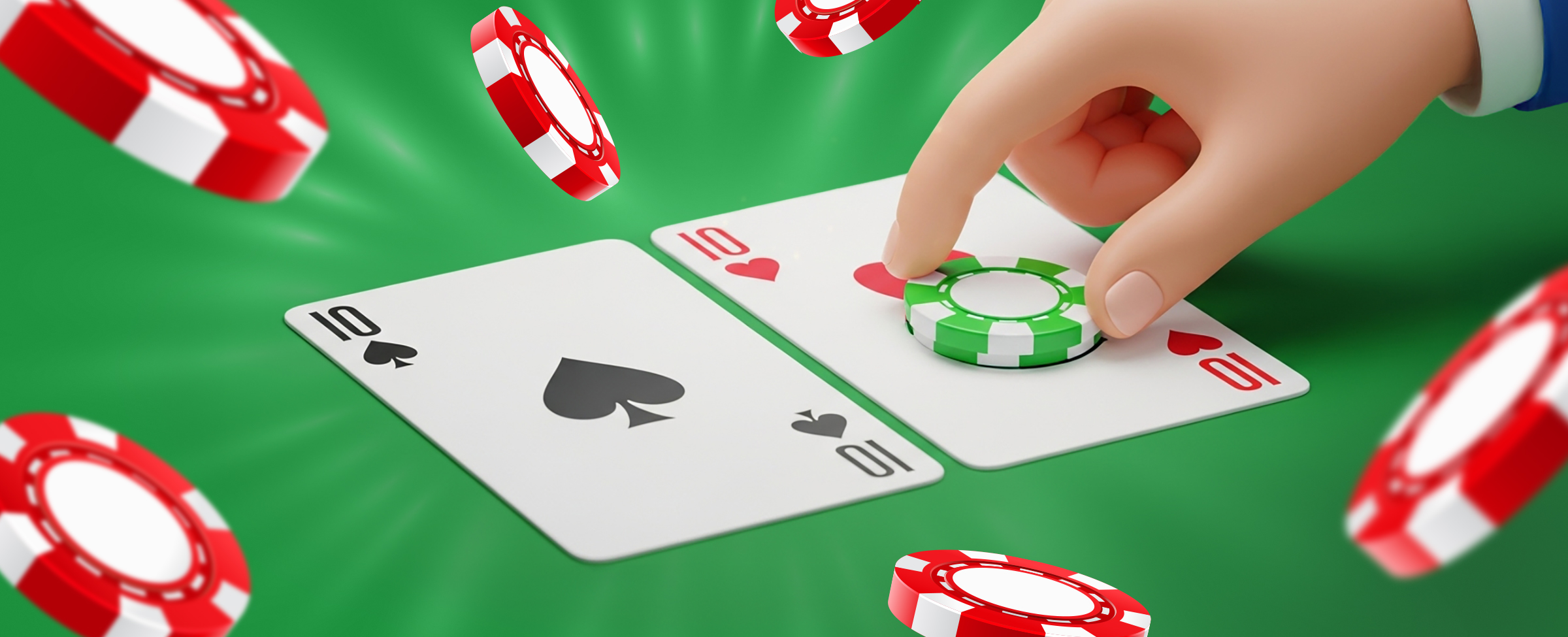Blackjack is one of the most popular and strategic table games at any casino both online and in person. It’s a game of odds, you need some discipline, and to make smart decisions. One of the most debated topics and common questions that gets asked when it comes to blackjack strategy is should you split 10s? And if so when?
For most players (especially beginners), the idea of splitting 10s seems risky, even reckless. Why break up a strong hand like 20… But under certain conditions, some advanced players argue that splitting 10s can be the right move especially when playing against specific dealer upcards and table conditions. In this easy to follow rundown, we’ll cover everything you need to know about this nuanced play:
- What counts as a 10-value card
- What your options are when you’re dealt a pair of 10s
- The rules around re-splitting
- When (and if) it ever makes sense to split 10s in blackjack
What is a 10 Value Card?
Before we talk strategy, it’s important to understand what constitutes a “10-value” card in blackjack. There are four types of cards in a standard 52-card deck that carry a value of 10: 10, Jack, Queen and King. Even though the Jack, Queen, and King are face cards, they all carry a point value of 10 in blackjack.
So, if you’re dealt a King and a 10, you’re holding a total of 20, one of the strongest starting hands in the game. A pair of 10-value cards (e.g., 10-10, Q-K, or J-10) is considered a 20-point hand, which will almost always beat the dealer unless they hit a 21. Because of this, most blackjack players instinctively stand on a 20, which is statistically the best decision in most cases.

Playing Options for a Pair of 10s
If you’re dealt a pair of 10s as your first two cards, you technically have a few options, depending on the rules of the table you’re playing at. These options usually include:
- Stand: Keep your 20-point hand as it is and hope it beats the dealer’s total.
- Split: Break the pair into two separate hands by matching your original bet. You’ll receive a new card on each 10 and play both hands independently.
- Double Down (rarely allowed): Some casinos may allow a double down on pairs, but it’s highly uncommon with 10s.
- Surrender (if offered): Not typically chosen with a 20 but surrendering gives up the hand in exchange for getting back half your bet.
Out of all these, standing on 20 is the go-to move for most players and for good reason. According to basic blackjack strategy, a 20 is a nearly unbeatable hand. The odds of the dealer drawing a 21 are relatively low, and any additional card would likely bust your hand if you chose to hit instead. So why do some players consider splitting 10s… It comes down to table dynamics, dealer upcards, and advanced card counting strategies.
Re-splitting 10s
Some blackjack tables allow players to re-split their hands if they receive another 10 after an initial split. For example, if you split a pair of 10s and draw another 10 on one of the new hands, you may have the option to split again and create a third hand.
Re-splitting 10s is not recommended in most cases, and many basic strategy charts advise against splitting 10s at all let alone re-splitting.
However, it’s important to know the rules of the table you’re playing at. If re-splitting is allowed:
- You’ll need to place an additional bet equal to your original bet
- You’ll manage up to three or four hands (depending on table rules)
- You’ll increase your exposure to both risk and reward
Unless you’re an advanced player with a very good reason (e.g., card counting and tracking deck composition), re-splitting 10s is almost never a mathematically sound move!

When to Split 10s
Here’s the real meat of this rundown, should you ever split 10s in blackjack? Almost never but… it depends on specific high-level conditions. Here’s why splitting 10s is generally a bad idea:
- A hand total of 20 has a 92% chance of winning or pushing (tying) against the dealer.
- Splitting turns one strong hand into potentially two weaker hands that need to be built up.
- It’s extremely risky and not worth the trade-off unless you have solid information about the deck or the dealer’s weakness.
Why and When Advanced Players Might Consider It:
1. Card Counting Advantage
If you’re using a high-level card counting system like Hi-Lo, and the deck is heavily in your favour (meaning it’s rich in 10s and Aces), splitting 10s can be a profitable play especially if the dealer shows a weak upcard like 5 or 6. The logic here is that you have a higher chance of landing another 10 or Ace on each hand, giving you two very strong totals instead of one.
However, this requires:
- Accurate deck tracking
- Strong mental focus
- Perfect timing
Top Tip: If you’re not an expert card counter, it’s best to stick with the standard strategy and stand.
2. Dealer Shows a Very Weak Card (5 or 6)
When the dealer’s upcard is a 5 or 6, they’re in a bust-prone position. Some players argue that splitting 10s here increases your chances of winning two hands against a likely bust, rather than just standing and winning one. Still, this is a high-risk move, and without card counting, the math doesn’t favour splitting even in this scenario. You risk turning a near-certain win into two hands that can easily fall below 20.
3. High Stakes or Tournaments
In a blackjack tournament, where chip count and aggressive play are factors, some pros may split 10s as a strategic or psychological play. If you’re behind in chip count and need to catch up, splitting 10s might give you a shot at doubling your winnings on a single hand but it’s still risky and should be used sparingly. In regular gameplay, where consistency matters more than drama, it’s almost always better to stand.
Summary: When (Not) to Split 10s
| Situation | Split 10s? | Why |
| Dealer shows 2-6 | No | Strong hand, no need to split |
| Dealer shows 5 or 6 (advanced play) | Maybe | Only with card counting |
| Dealer shows 7–A | No | Too risky |
| In a tournament | Maybe | If you’re behind and need a swing |
| You are card counting | Maybe | Depends on count and deck comp. |
| Casual play | No | Not worth the risk |
Final Thoughts: Stand Strong on Your 20
Unless you’re an experienced player using advanced tactics, the best move when dealt a pair of 10s is simple you Stand! A total of 20 is a premium hand in blackjack and should be treated as such. Splitting 10s might seem like an exciting way to double your action, but statistically, you’re more likely to hurt your chances than improve them. For most players, especially those playing online blackjack or live dealer games at casinos like Joe Fortune, sticking with basic strategy is the smartest play. In blackjack, discipline wins in the long run. So, when in doubt, trust the maths, stand on 20, and let the dealer sweat.
